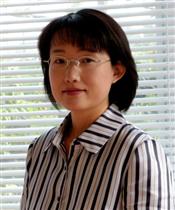Program Information
Results of a Survey On the Implementation of the TG-51 Protocol and Associated Addendum On Reference Dosimetry of External Beams
G Kim1*, B Muir2 , W Culberson3 , S Davis4 , Y Huang5 , S Lee6 , J Lowenstein7 , A Sarfehnia8 , N Tolani9 , J Siebers10 , (1) University of California, San Diego, La Jolla, CA, (2) National Research Council, Ottawa, AB, (3) University of Wisc Madison, Madison, WI, (4) McGill University Health Center, Montreal, QC, (5) Henry Ford Health System, West Bloomfield, MI, (6) University of Maryland School of Medicine, Columbia, MD, (7) UT MD Anderson Cancer Center, Houston, TX, (8) Sunnybrook Health Science Center, Toronto, ON, (9) Michael E. DeBakey VA Medical Center, Sugarland, AA, (10) University of Virginia Health System, Charlottesville, VA
Presentations
TU-D-201-3 (Tuesday, August 2, 2016) 11:00 AM - 12:15 PM Room: 201
Purpose: The working group on the review and extension of the TG-51 protocol (WGTG51) collected data from American Association of Physicists in Medicine (AAPM) members with respect to their current TG-51 and associated addendum usage in the interest of considering future protocol addenda and guidance on reference dosimetry best practices. This study reports an overview of this survey on dosimetry of external beams.
Methods: Fourteen survey questions were developed by WGTG51 and released in November 2015. The questions collected information on reference dosimetry, beam quality specification, and ancillary calibration equipment.
Results: Of the 190 submissions completed worldwide (U.S. 70%), 83% were AAPM members. Of the respondents, 33.5% implemented the TG-51 addendum, with the maximum calibration difference for any photon beam, with respect to the original TG-51 protocol, being <1% for 97.4% of responses. One major finding is that 81.8% of respondents used the same cylindrical ionization chamber for photon and electron dosimetry, implying that many clinics are foregoing the use of parallel-plate chambers. Other evidence suggests equivalent dosimetric results can be obtained with both cylindrical and parallel-plate chambers in electron beams. This, combined with users comfort with cylindrical chambers for electrons will likely impact recommendations put forward in an upcoming electron beam addendum to the TG-51 protocol. Data collected on ancillary equipment showed 58.2% (45.0%) of the thermometers (barometers) in use for beam calibration had NIST traceable calibration certificates, but 48.4% (42.7%) were never recalibrated.
Conclusion: This survey provides a snapshot of TG-51 external beam reference dosimetry practice in radiotherapy centers. Findings demonstrate the rapid take-up of the TG-51 photon beam addendum and raise issues for the WGTG51 to focus on going forward, including guidelines on ancillary equipment and the choice of chamber for electron beam dosimetry.
Contact Email:

